Future Focus: Eric Smith
Eric Smith, a final-year medical student at James Cook University, has recently returned from a transformative elective in Nepal.
During his time at a local hospital in Benapa, Eric was immersed in an awe-inspiring four weeks. From observing the inner workings of a developing health system to witnessing firsthand the remarkable efforts of healthcare professionals on the other side of the world, Eric's experience left a lasting impression on him.
Why Nepal?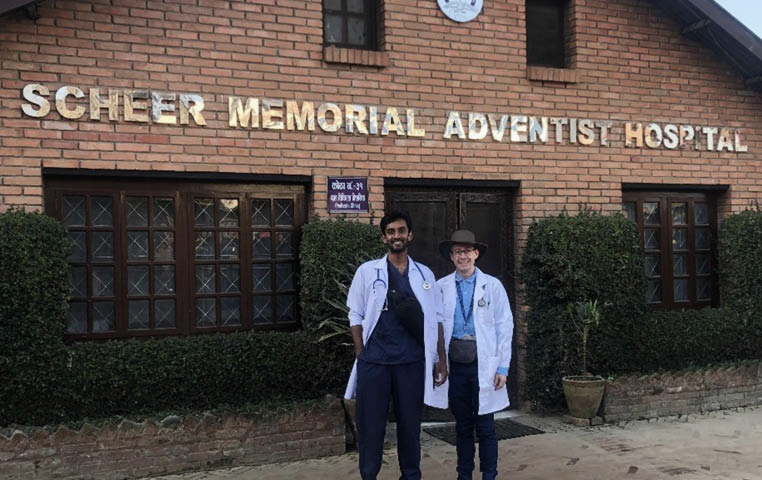
Nepal has been a place I’ve wanted to visit for many years now and surely it’s easy to see why. It has a unique geography landlocked between India and China with its breathtaking Himalayan mountains decorated beautifully with ancient Buddhist pagodas and Hindu monasteries cultivating incredible diversity of religion and culture. But aside from this, the country has had something of a revolution in health outcomes over the past few decades, likely secondary to radically improving maternal and child health. The World Health Organisation reports that the prevalence of stunting (short height for age) among children under five decreased from 57 per cent in 1996 to 32 per cent in 2019. During the same period, the prevalence of underweight children reduced from 42 per cent to 24%. Yet despite this, anaemia has increased in both women and children, reaching 41% and 53% in 2011 and 2016, respectively and these challenges have been complicated by a series of relatively recent disasters. Most notably, the 7.8 magnitude earthquake in 2015, which devastated the country. Just as Nepal started to get back on its feet, the COVID-19 pandemic hit, which led to several shortages of essential medicines and exacerbated pre-existing workforce shortages while simultaneously crippling its tourism sector, which still contributes significantly to Nepal’s GDP at around 6.7% (or US$2.2B). With such a vibrant history, including the relatively recent abolishment of its long-reigning monarchy, I was intrigued at how such a physically small country with a population of 30 million was overcoming these problems.
Arrival and culture shock
One of the first things I felt when I first arrived in Nepal was the sincere, non-transactional friendliness of everyone. On my first day, my host family, Bijuli and Sunita, greeted me in the traditional Nepalese way, ceremonially placing a Malmal shawl around my neck and bindi on my forehead and then accompanying me in the back of a tiny van which took us back to Banepa to their accommodation.
It was definitely a bit of a shock to the system, transitioning from the sweltering mid-30s heat of Townsville into the rather icy 4 degrees Celsius upon arrival in Kathmandu. But the physical shock was only the beginning – having the roles reversed for the first time ever and being very clearly the ‘odd one out’ in the town (devoid of tourists) when looking at the people around you is really quite an unsettling feeling. It’s made me appreciate how many migrants from culturally and linguistically diverse backgrounds must feel coming to Australia and trying to overcome enormous language barriers. It can be an isolating feeling, especially if you’re completely alone.
By complete coincidence, I happened to be in Banepa on placement at the same time as another Australian - a junior doctor from Melbourne named Manoj, who was also volunteering. We got along well and went on a few trips to the neighbouring towns! With this, and alongside the help of my hosts Sunita and Bijuli treating me like family, I was able to settle in and feel at home after a few days.
Hospital experience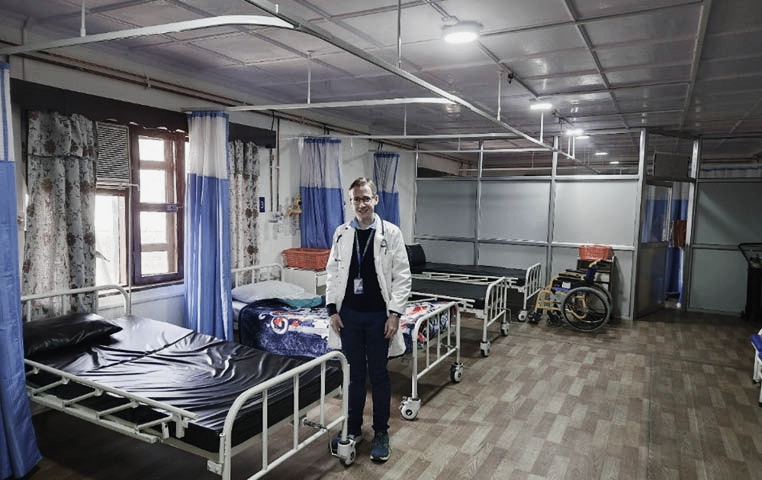
My elective took place at the Scheer Memorial Adventist Hospital (SMAH) and is well-known across Nepal. Its origins go back to the mid-20th century when Nepal started its own gradual process of globalisation, allowing foreigners including Christian missionaries to come in to start a healthcare service in the region. It began as a one-room clinic which has now evolved into a 150-bed facility that provides a full range of outpatient and inpatient services, of which I had the opportunity to rotate through during my tenure at the hospital. SMAH prides itself on being the first hospital in Nepal to perform laparoscopic surgery. The hospital delivers healthcare with a non-profit approach to treat everyone irrespective of whether they can afford it, putting it somewhere in between the fully publicly funded hospitals and the completely private hospitals.
With a very loose timetable, my elective commenced with the internal medicine team where I gained exposure to a variety of health illnesses. Manoj and I began in the ICU, which was just two rooms of two beds linked with a small passageway and a nursing station. I saw the gender-segregated wards, which was interesting, and a variety of illnesses; lots of infectious exacerbations of COPD, community acquired pneumonias, undifferentiated febrile illnesses, and acute exacerbations of heart failure. After the medical ward round, the doctors would have morning tea and then head to outpatient clinics. This was quite the experience with a revolving door of patients coming in and out with their documentation in hand. Doctors needed to interpret basic investigations which the patient had bought from the finance department on the other side of the hospital and ‘ordered’ from pathology themselves with the payment receipt. Even though the investigations were quite cheap (~200NPR or $2.50 for a full blood count, for example), for many of the patients this is quite a lot of money relative to their income. It makes you appreciate the public healthcare system we have in Australia and how we should absolutely protect it if we really want to deliver healthcare for all as a human right, and not have to think about selling assets to get essential hospital investigations and treatment. I really enjoyed my time with the internal medicine team, especially Dr Sabin, Dr Abrik, Dr Abhishek and Dr Simran, who really helped make sure I was well looked after, and who gave me great insight into the life of a doctor working in Nepal.
In theatre, I was exceptionally impressed, even though I wasn’t there for long. There were general surgery, urology, obstetrics/gynaecology and orthopaedic lists with several advanced procedures being performed daily. There were clear resource limitations broadly across the hospital, including reusing a majority of surgical instruments and scrubs/clothing. It was obvious that they made do with what they had, and while I don’t know if the rates of iatrogenic infections were higher there than they are in Australia, the amount of waste is undoubtedly far less than it is at home. And that is something to be applauded. I also got to see some more specialist outpatient clinics including ophthalmology, dermatology (where I saw a few interesting cases of varicella zoster and one case of leprosy) and ear, nose and throat. The rest of my time was spent in the Emergency Department (ED) which was also a great learning experience.
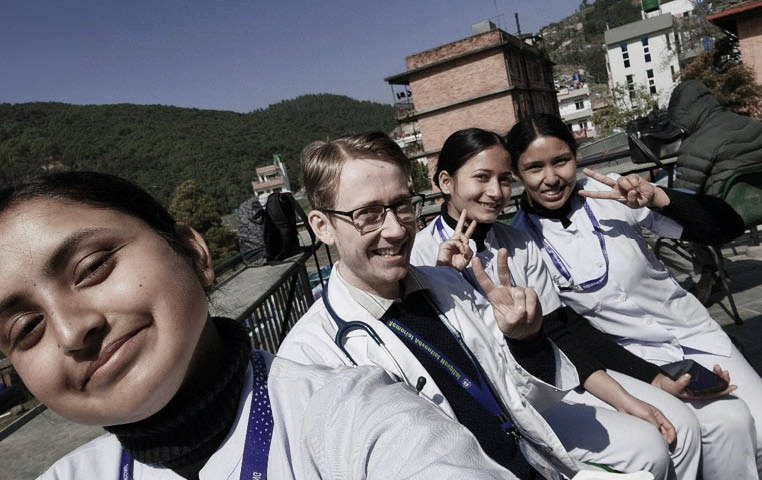 Perhaps the biggest difference I noticed with Nepal’s health system in general is the dynamic between patients and doctors. Unlike the West’s emphasis on individual autonomy and patient-centred care, in Nepal it’s extremely paternalistic. But interestingly, this seems to be more of a cultural difference, and one that is not necessarily negative – indeed, most patients simply expect their doctor to tell them what to do, and they’ll follow it as best they can. There is not really a discussion, and this stems from the way the hospital is set up. There is very little privacy, with patients walking in and out of rooms where doctors are performing outpatient clinics or into other ED rooms.
Perhaps the biggest difference I noticed with Nepal’s health system in general is the dynamic between patients and doctors. Unlike the West’s emphasis on individual autonomy and patient-centred care, in Nepal it’s extremely paternalistic. But interestingly, this seems to be more of a cultural difference, and one that is not necessarily negative – indeed, most patients simply expect their doctor to tell them what to do, and they’ll follow it as best they can. There is not really a discussion, and this stems from the way the hospital is set up. There is very little privacy, with patients walking in and out of rooms where doctors are performing outpatient clinics or into other ED rooms.
With no medical students at the hospital, I made friends with several of the nursing students alongside the doctors, and in reciprocation of my generosity for helping teach them how to do basic physical examinations, they would often take me out for lunch where I enjoyed incredibly tasty street food such as momos and panipuri.
Health in Nepal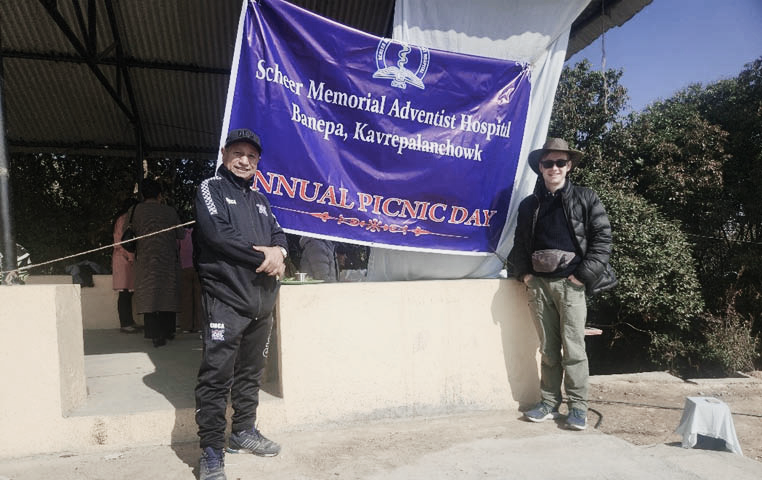
One of the core aims of my elective was to learn about how Nepal has implemented various public health reforms to dramatically improve health outcomes, and to gain a better understanding of the health issues unique to the country.
One of the immediate things you learn soon after flying into Kathmandu airport is the transport infrastructure is inadequate. It took an hour to get to Benapa, 30 km from Kathmandu airport via road, largely because of the sheer number of potholes and dirt roads rendering them unsafe for the most part. In my last week while travelling from Pokhara to Chitwan, we were held up for an hour in a massive queue of cars. As we approached the checkpoint, we saw a bus being winched up from over the cliff edge with the front so damaged it was almost unrecognisable. These are fundamentally health issues at their heart and ought not to be neglected. From my time in the ED, it was clear that major trauma and motor vehicle accidents were a daily occurrence. Part of the other problem with this is ambulance response times are so long. Even if you are only 10-20 km away from the closest hospital, the trip by road can take up to 1-2 hours due to the poor (and in many cases, narrow) conditions and physical inability of cars to clear the way for emergency services.
The other big health issue I witnessed was infectious disease, notably tuberculosis, which is endemic. I’m lucky I brought some N95 masks with me, because the amount of TB you see is extraordinary. It felt as though every 2nd patient presenting with haemoptysis had an acid-fast bacilli test ordered, and maybe 50% came back positive for TB. The X-rays, which were ‘old school’ physical films, were something to behold too – because patients often present so late, often the X-rays showed complete ‘white out’ of one entire lung due to post-TB fibrosis. I also saw a few cases of rickettsia and brucellosis which I’m glad JCU prepared me well for on the theory side of things. Dengue fever does exist, but I didn’t witness any cases due to the colder weather at the time of my elective. Unfortunately, largely due to the financial and staffing limitations with ordering investigations like sputum cultures, antibiotic resistance is an ongoing issue in Nepal. It was alarming to see patients administered broad spectrum antibiotics like meropenem and piperacillin-tazobactam early on in the management of community acquired pneumonias, because broader spectrum antibiotics just don’t have any effect anymore. This is simply a result of limited resources, time, and expense.
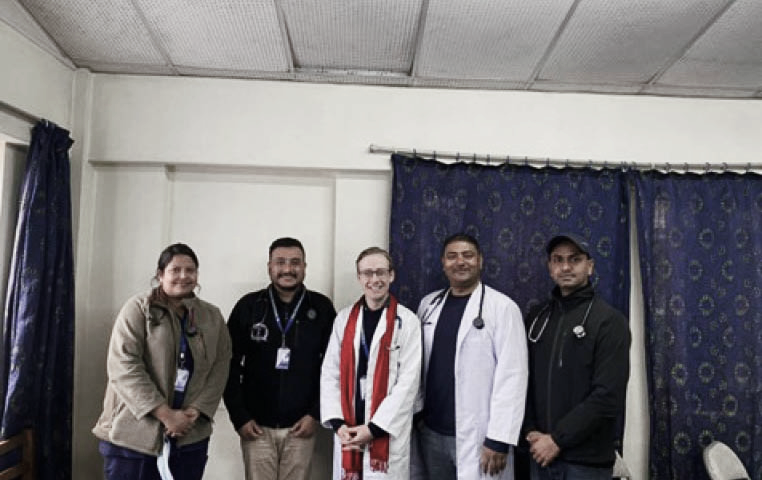 The general poverty of much of the population also manifests in late presentations to hospital, which I found quite difficult to process. One patient in my second week presented with cardinal signs of a left middle cerebral artery (MCA) stroke, later confirmed on CT imaging on a background of long-standing untreated hypertension and AF. Because of his relatively late presentation beyond the usual 4.5-hour time-course for thrombolysis, and with no government-funded rehabilitation centres, the patient had nowhere to go. The implication from the treating doctor I was shadowing in the ED was that the sad reality is that he’s simply going to be wheeled away to eventually die. This was devastating to hear, and apparently not an uncommon situation. Indeed, many patients presenting after myocardial infarctions or suspected strokes were given pretty poor prognoses simply due to the time delays of getting them to the tertiary referral hospitals well-equipped with a catheterisation lab and stroke unit, for example. Staffing shortages are also evident, with many of the doctors alarmingly doing 29-hour shifts with no real alternative due to the enormous patient demands. These are endemic issues which will require significant government support and ongoing healthcare reform to improve.
The general poverty of much of the population also manifests in late presentations to hospital, which I found quite difficult to process. One patient in my second week presented with cardinal signs of a left middle cerebral artery (MCA) stroke, later confirmed on CT imaging on a background of long-standing untreated hypertension and AF. Because of his relatively late presentation beyond the usual 4.5-hour time-course for thrombolysis, and with no government-funded rehabilitation centres, the patient had nowhere to go. The implication from the treating doctor I was shadowing in the ED was that the sad reality is that he’s simply going to be wheeled away to eventually die. This was devastating to hear, and apparently not an uncommon situation. Indeed, many patients presenting after myocardial infarctions or suspected strokes were given pretty poor prognoses simply due to the time delays of getting them to the tertiary referral hospitals well-equipped with a catheterisation lab and stroke unit, for example. Staffing shortages are also evident, with many of the doctors alarmingly doing 29-hour shifts with no real alternative due to the enormous patient demands. These are endemic issues which will require significant government support and ongoing healthcare reform to improve.
Addressing chronic disease
Indeed, one of the most rewarding experiences I had was visiting the new oncology ward the hospital had set up to deliver chemotherapy and cancer-specific care to patients who might not be able to otherwise access it. One of the general surgeons, Dr Dhruba (who also helps run the oncology ward) told me of his renewed priority regarding improving screening for cancers in his region of Nepal. While there are national breast cancer and bowel cancer screening programs funded by the government, there is not yet the public health literacy of patients to actually make use of this. He went on a big bus trip out to the regional areas with a team from the hospital, dedicated to giving out free FOBT kits as part of bowel cancer screening. Despite handing out 100 kits and attempting to educate patients on how to use them, only 12 patients sent back the completed kits, and of those, five were positive. Of the five kits which came back positive, only one showed up for the colonoscopy that had been booked for them. He told me that it’s very difficult for health practitioners to deliver primary care when the community aren’t able to see the benefits of screening. It manifests more broadly with the entire health structure – general practitioners (GPs) are basically absent in Nepal; if you get sick you go to the hospital to receive treatment. At SMAH, a small out-of-pocket cost is required to receive treatment. This can be a lot of money for many patients, resulting in a culture where patients present late, and often when their health is beyond serious. This invariably worsens health outcomes. I had hoped to go on some outreach clinics and local orphanages to see the primary health in action, however, unfortunately there were no trips scheduled during my elective.
Being a tourist
Of course I didn’t go overseas just to lock myself in the confines of the hospital, and it would be remiss of me not to briefly touch on some of the travel I did during my month in Nepal. My host family were very helpful directing me, as there were no Google maps to save the day. In my first week, I visited nearby Panauti to witness a traditional Hindu worship at a temple early one morning where several women bathe in the river before walking barefoot to Kathmandu as part of a Hindu tradition. I also went to Dhulikhel to do the ‘Thousand Step Walk’ to the top of the mountain overlooking the Kathmandu valley and managed to get a late invite to a traditional Nepalese wedding in Bhaktapur where I had an amazing time. I didn’t neglect Kathmandu either and stayed in one of the tourist hostels costing 400NPR/night (around AUD$6) with a beautiful morning view of the city in the penthouse 10-bed dormitory. In Kathmandu, I also visited Swayambhunath (the so-called ‘Monkey Temple’), which was a sight to behold.
In my last week I took a bus trip and after 8 hours of driving up and around windy mountains, I arrived in Pokhara, an absolutely beautiful lakeside city north-east of Kathmandu. I met some great people at one of the youth hostels and managed to see a beautiful sunrise over the lake. I took a boat across the lake then climbed up the mountain to see the magnificent ‘World Peace Pagoda’. Then I went south to Chitwan, which was a lot warmer given it’s one of only a few places at sea level in Nepal and went on a safari with a small group and a local tour guide, and saw some rhinos, Indian elephants, peacocks and crocodiles. Following my return to Banepa, I said my final goodbyes and flew back home to Australia.
Conclusion
Being given the privilege to travel to a Third World country for a month on a medical elective was honestly one of the most incredible experiences of my life, and I will forever cherish the people I met and the memories I created being immersed in such a uniquely different environment from what I’ve been used to. While Nepal does face numerous economic and health challenges, and while they may not have the latest and greatest technology that we are privileged to have in Australia, there is one thing that will always stay with me – the sense of true community that binds everyone together. That is something worth taking home with me.
I would also like to sincerely thank BOQ Specialist for their extremely generous financial assistance in giving me this opportunity to travel overseas. I am eternally grateful.
 Facebook
Facebook
Like and follow us on Facebook to keep up to date with all our student offers, events, competitions and more.